





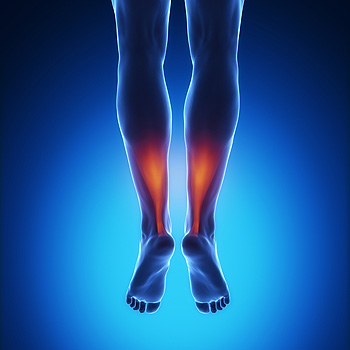 The Achilles tendon is located in the back of the leg, and connects the heel to the calf muscles. It plays an important role in daily life and can cause severe pain and discomfort if it becomes injured. An Achilles tendon injury can happen for a variety of reasons, including overuse, stepping off of a curb unexpectedly, and from frequently wearing high heels. Common symptoms of this type of injury can include immediate pain, swelling, and bruising. Many patients that have endured an Achilles tendon injury realize it takes several weeks for a complete recovery to occur. It is beneficial to keep the affected foot elevated as often as possible, and it can help to perform specific stretches that may aid in the healing process. If you are currently experiencing an Achilles tendon injury, it is strongly suggested that you are under the care of a podiatrist who can help you toward a full recovery.
The Achilles tendon is located in the back of the leg, and connects the heel to the calf muscles. It plays an important role in daily life and can cause severe pain and discomfort if it becomes injured. An Achilles tendon injury can happen for a variety of reasons, including overuse, stepping off of a curb unexpectedly, and from frequently wearing high heels. Common symptoms of this type of injury can include immediate pain, swelling, and bruising. Many patients that have endured an Achilles tendon injury realize it takes several weeks for a complete recovery to occur. It is beneficial to keep the affected foot elevated as often as possible, and it can help to perform specific stretches that may aid in the healing process. If you are currently experiencing an Achilles tendon injury, it is strongly suggested that you are under the care of a podiatrist who can help you toward a full recovery.
Achilles tendon injuries need immediate attention to avoid future complications. If you have any concerns, contact one of our podiatrists of Active Foot and Ankle Care, LLC. Our doctors can provide the care you need to keep you pain-free and on your feet.
What Is the Achilles Tendon?
The Achilles tendon is a tendon that connects the lower leg muscles and calf to the heel of the foot. It is the strongest tendon in the human body and is essential for making movement possible. Because this tendon is such an integral part of the body, any injuries to it can create immense difficulties and should immediately be presented to a doctor.
What Are the Symptoms of an Achilles Tendon Injury?
There are various types of injuries that can affect the Achilles tendon. The two most common injuries are Achilles tendinitis and ruptures of the tendon.
Achilles Tendinitis Symptoms
Rupture Symptoms
Treatment and Prevention
Achilles tendon injuries are diagnosed by a thorough physical evaluation, which can include an MRI. Treatment involves rest, physical therapy, and in some cases, surgery. However, various preventative measures can be taken to avoid these injuries, such as:
If you have any questions please feel free to contact our offices located in Fair Lawn, Riverdale, and Englewood, NJ . We offer the newest diagnostic tools and technology to treat your foot and ankle needs.
A bunion is a type of foot deformity in which a bony bump forms on the side of the foot near the base of the big toe. Bunions develop slowly, as pressure on the joint at the base of the toe causes the toe to move out of place. Although bunions can sometimes be embarrassing, if you have them, you aren’t alone. About a third of adults in the United States have bunions. Bunions may cause foot pain, stiffness, redness, or swelling and tend to worsen over time, potentially making wearing your regular shoes, or even walking, more difficult. Seeking treatment can help. Treatment options may include wearing orthotic insoles and wider shoes, taking oral medications to relieve pain, or wearing special braces or pads on the foot. In more severe cases, surgery may be an option. If you have bunions, consult with a podiatrist to determine which treatments are right for you.
If you are suffering from bunions, contact one of our podiatrists of Active Foot and Ankle Care, LLC. Our doctors can provide the care you need to keep you pain-free and on your feet.
What Is a Bunion?
A bunion is formed of swollen tissue or an enlargement of boney growth, usually located at the base joint of the toe that connects to the foot. The swelling occurs due to the bones in the big toe shifting inward, which impacts the other toes of the foot. This causes the area around the base of the big toe to become inflamed and painful.
Why Do Bunions Form?
Genetics – Susceptibility to bunions are often hereditary
Stress on the feet – Poorly fitted and uncomfortable footwear that places stress on feet, such as heels, can worsen existing bunions
How Are Bunions Diagnosed?
Doctors often perform two tests – blood tests and x-rays – when trying to diagnose bunions, especially in the early stages of development. Blood tests help determine if the foot pain is being caused by something else, such as arthritis, while x-rays provide a clear picture of your bone structure to your doctor.
How Are Bunions Treated?
If you have any questions, please feel free to contact our offices located in Fair Lawn, Riverdale, and Englewood, NJ . We offer the newest diagnostic and treatment technologies for all your foot care needs.
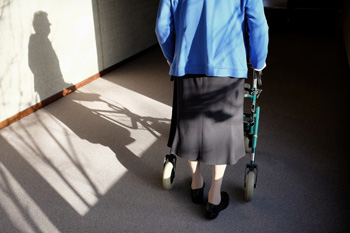 It is common for elderly people to fall. In fact, falling is the leading cause of injuries among the elderly. Several complications may result from falling, including disability, a loss of independence, and fatal injuries. It is beneficial to have regular physical and eye examinations, as this can be helpful in regulating medication and wearing proper eyeglasses, which can in turn reduce the risk of falling. Many patients find it helpful to improve safety conditions in the household. This can include removing worn rugs and installing brighter lights. Additionally, it is suggested to use grab bars in the shower and toilet area. Many falls can lead to a broken foot, ankle, or general foot pain. If you would like more information about how falling can affect the feet, please confer with a podiatrist.
It is common for elderly people to fall. In fact, falling is the leading cause of injuries among the elderly. Several complications may result from falling, including disability, a loss of independence, and fatal injuries. It is beneficial to have regular physical and eye examinations, as this can be helpful in regulating medication and wearing proper eyeglasses, which can in turn reduce the risk of falling. Many patients find it helpful to improve safety conditions in the household. This can include removing worn rugs and installing brighter lights. Additionally, it is suggested to use grab bars in the shower and toilet area. Many falls can lead to a broken foot, ankle, or general foot pain. If you would like more information about how falling can affect the feet, please confer with a podiatrist.
Preventing falls among the elderly is very important. If you are older and have fallen or fear that you are prone to falling, consult with one of our podiatrists from Active Foot and Ankle Care, LLC. Our doctors will assess your condition and provide you with quality advice and care.
Every 11 seconds, an elderly American is being treated in an emergency room for a fall related injury. Falls are the leading cause of head and hip injuries for those 65 and older. Due to decreases in strength, balance, senses, and lack of awareness, elderly persons are very susceptible to falling. Thankfully, there are a number of things older persons can do to prevent falls.
How to Prevent Falls
Some effective methods that older persons can do to prevent falls include:
Falling can be a traumatic and embarrassing experience for elderly persons; this can make them less willing to leave the house, and less willing to talk to someone about their fears of falling. Doing such things, however, will increase the likelihood of tripping or losing one’s balance. Knowing the causes of falling and how to prevent them is the best way to mitigate the risk of serious injury.
If you have any questions, please feel free to contact our offices located in Fair Lawn, Riverdale, and Englewood, NJ . We offer the newest diagnostic and treatment technologies for all your foot care needs.
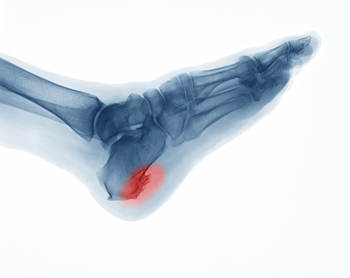 Heel spurs are buildups of calcium on the heel bone that can irritate the tissues of the heel, causing pain. There are several things that you can do to prevent heel spur pain. Make sure that you wear properly-fitting, supportive shoes that your feet can move freely in, and avoid worn out shoes that do not adequately support your feet. Maintain a healthy weight in order to put less stress on your feet. Make sure that you give yourself enough time to rest and recover following intense workouts. If you are experiencing heel pain, you may want to look into wearing insoles designed for heel pain. For more information about heel spurs and how to treat them, consult with a podiatrist today.
Heel spurs are buildups of calcium on the heel bone that can irritate the tissues of the heel, causing pain. There are several things that you can do to prevent heel spur pain. Make sure that you wear properly-fitting, supportive shoes that your feet can move freely in, and avoid worn out shoes that do not adequately support your feet. Maintain a healthy weight in order to put less stress on your feet. Make sure that you give yourself enough time to rest and recover following intense workouts. If you are experiencing heel pain, you may want to look into wearing insoles designed for heel pain. For more information about heel spurs and how to treat them, consult with a podiatrist today.
Heel spurs can be incredibly painful and sometimes may make you unable to participate in physical activities. To get medical care for your heel spurs, contact one of our podiatrists from Active Foot and Ankle Care, LLC. Our doctors will do everything possible to treat your condition.
Heels Spurs
Heel spurs are formed by calcium deposits on the back of the foot where the heel is. This can also be caused by small fragments of bone breaking off one section of the foot, attaching onto the back of the foot. Heel spurs can also be bone growth on the back of the foot and may grow in the direction of the arch of the foot.
Older individuals usually suffer from heel spurs and pain sometimes intensifies with age. One of the main condition's spurs are related to is plantar fasciitis.
Pain
The pain associated with spurs is often because of weight placed on the feet. When someone is walking, their entire weight is concentrated on the feet. Bone spurs then have the tendency to affect other bones and tissues around the foot. As the pain continues, the feet will become tender and sensitive over time.
Treatments
There are many ways to treat heel spurs. If one is suffering from heel spurs in conjunction with pain, there are several methods for healing. Medication, surgery, and herbal care are some options.
If you have any questions feel free to contact our offices located in Fair Lawn, Riverdale, and Englewood, NJ . We offer the latest in diagnostic and treatment technology to meet your needs.
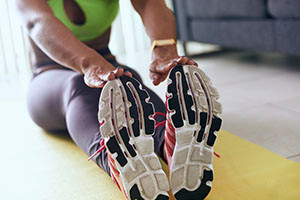 The importance of taking the necessary steps to prevent running injuries may not be known by everyone, however, it is often recognized among people who enjoy running as a sport or hobby. Firstly, it is beneficial to practice strength training for the whole body and this may aide in the prevention of painful injuries. Performing single-leg exercises can help to improve balance and stability, in addition to practicing squats and deadlifts. Secondly, the recovery process is just as important as running and performing strength exercises. Proper recovery can help prevent damage to the bones and muscles. If you are experiencing a sharp or stabbing pain you shouldn’t run that day. If you feel slightly sore you can still run, but it is suggested to shorten the distance originally planned. To add variety to the repetitive nature of running, rotate two or more pairs of running shoes to subtly alter your biomechanics. If you would like more information about running injuries and how to prevent them, please speak with a podiatrist.
The importance of taking the necessary steps to prevent running injuries may not be known by everyone, however, it is often recognized among people who enjoy running as a sport or hobby. Firstly, it is beneficial to practice strength training for the whole body and this may aide in the prevention of painful injuries. Performing single-leg exercises can help to improve balance and stability, in addition to practicing squats and deadlifts. Secondly, the recovery process is just as important as running and performing strength exercises. Proper recovery can help prevent damage to the bones and muscles. If you are experiencing a sharp or stabbing pain you shouldn’t run that day. If you feel slightly sore you can still run, but it is suggested to shorten the distance originally planned. To add variety to the repetitive nature of running, rotate two or more pairs of running shoes to subtly alter your biomechanics. If you would like more information about running injuries and how to prevent them, please speak with a podiatrist.
Exercising your feet regularly with the proper foot wear is a great way to prevent injuries. If you have any concerns about your feet, contact one of our podiatrists of Active Foot and Ankle Care, LLC. Our doctors will treat your foot and ankle needs.
How to Prevent Running Injuries
Many common running injuries are caused by overuse and overtraining. When the back of the kneecap starts wearing out and starts causing pain in your knee, this is commonly referred to as runner’s knee. Runner’s knee is a decrease in strength in your quadriceps and can occur if you’re not wearing properly fitted or supporting shoes. To prevent runner’s knee, focusing on hip strengthening is a good idea, as well as strengthening your quads to keep the kneecaps aligned.
What Are Some Causes of Running Injuries?
- One cause of a common running injury is called iliotibial band syndrome.
- Plantar fasciitis is also another common injury.
- Stress fractures can occur from overtraining, lack of calcium, or even your running style.
Best Ways to Prevent Running Injuries
- Wear footwear that fits properly and suits your running needs.
- Running shoes are the only protective gear that runners have to safeguard them from injury.
- Make a training schedule. Adding strengthening exercises as well as regular stretching can help keep you strong and limber and can lessen the possibility of injuries.
- Stretching keeps muscles limber; this will help you gain better flexibility.
If you have any questions please feel free to contact our offices located in Fair Lawn, Riverdale, and Englewood, NJ . We offer the newest diagnostic and treatment technologies for all your foot and ankle needs.
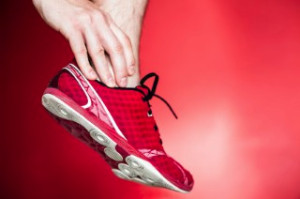 Proper footwear is important when you go for a run. To find the best running shoes for you, it is recommended that you visit a brick and mortar store. This way, you can try on shoes before you buy them and get expert advice and a proper shoe fitting from the store’s staff. To help you find the best pair of running shoes for your specific needs, look at a pair of your most frequently worn shoes for clues on how your foot functions, which can help them recommend a good shoe for you. Often, your running shoes may need to be larger than your everyday footwear. It is important to focus on the fit of the running shoe rather than the size. It is also suggested that you look for shoes that give your toes extra room, as the foot can swell throughout the day, especially while exercising. For more information on how to find the right running shoes for you, you can also consult with a podiatrist.
Proper footwear is important when you go for a run. To find the best running shoes for you, it is recommended that you visit a brick and mortar store. This way, you can try on shoes before you buy them and get expert advice and a proper shoe fitting from the store’s staff. To help you find the best pair of running shoes for your specific needs, look at a pair of your most frequently worn shoes for clues on how your foot functions, which can help them recommend a good shoe for you. Often, your running shoes may need to be larger than your everyday footwear. It is important to focus on the fit of the running shoe rather than the size. It is also suggested that you look for shoes that give your toes extra room, as the foot can swell throughout the day, especially while exercising. For more information on how to find the right running shoes for you, you can also consult with a podiatrist.
Finding a properly-fitting shoe is important in reducing injuries and preventing foot problems. For more information about treatment, contact one of our podiatrists from Active Foot and Ankle Care, LLC. Our doctors will treat your foot and ankle needs.
Proper Shoe Fitting
A common concern when it comes to foot health, having properly fitted shoes can help prevent injuries to the foot. Out feet affect our posture and gait, which in turn affects the biomechanics and overall bodily structure. With 33 joints, 26 bones, and over 100 ligaments, the potential for serious injury is much greater than one realizes. Although the feet cease growth in adulthood, they still change shape as they mature. Here are some factors to consider when it comes to investing in proper fitting shoes:
Keeping in mind how shoes fit the biomechanics of your body, properly-fitting shoes are vitally important. Fortunately, it is not difficult to acquire footwear that fits correctly. Be sure to wear shoes that support the overall structure of your body. Do your feet a favor and invest in several pairs of well-fitted shoes today.
If you have any questions please feel free to contact our offices located in Fair Lawn, Riverdale, and Englewood, NJ . We offer the newest diagnostic and treatment technologies for all your foot and ankle needs.
Read more about Proper Shoe Fitting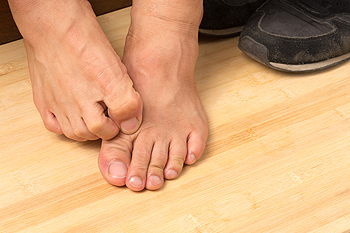 Tinea pedis, or Athlete’s foot as it is more commonly known, is a fungal infection of the skin and feet. It typically affects the spaces between the toes and is characterized by cracked, scaly skin. This infection is contagious and can be spread through contact with infected skin flakes or through contact with fungi in damp areas, such as public swimming pools. If you find yourself with athlete’s foot, it is important to keep the feet clean, dry, and cool, as the fungus thrives and multiplies in warm, moist environments. You should also avoid public swimming pools, public showers, and foot baths. Wear sandals if possible, or air out your shoes by alternating them every 2-3 days. Avoid wearing socks made from fabrics like nylon, which do not dry easily. Finally, follow your doctor’s prescribed treatments, which can include topical or oral antifungal medications. If you think that you may have athlete’s foot, it is suggested that you seek the care of a podiatrist.
Tinea pedis, or Athlete’s foot as it is more commonly known, is a fungal infection of the skin and feet. It typically affects the spaces between the toes and is characterized by cracked, scaly skin. This infection is contagious and can be spread through contact with infected skin flakes or through contact with fungi in damp areas, such as public swimming pools. If you find yourself with athlete’s foot, it is important to keep the feet clean, dry, and cool, as the fungus thrives and multiplies in warm, moist environments. You should also avoid public swimming pools, public showers, and foot baths. Wear sandals if possible, or air out your shoes by alternating them every 2-3 days. Avoid wearing socks made from fabrics like nylon, which do not dry easily. Finally, follow your doctor’s prescribed treatments, which can include topical or oral antifungal medications. If you think that you may have athlete’s foot, it is suggested that you seek the care of a podiatrist.
Athlete’s foot is an inconvenient condition that can be easily reduced with the proper treatment. If you have any concerns about your feet and ankles, contact one of our podiatrists from Active Foot and Ankle Care, LLC. Our doctors will treat your foot and ankle needs.
Athlete’s Foot: The Sole Story
Athlete's foot, also known as tinea pedis, can be an extremely contagious foot infection. It is commonly contracted in public changing areas and bathrooms, dormitory style living quarters, around locker rooms and public swimming pools, or anywhere your feet often come into contact with other people.
Solutions to Combat Athlete’s Foot
Athlete’s foot can cause many irritating symptoms such as dry and flaking skin, itching, and redness. Some more severe symptoms can include bleeding and cracked skin, intense itching and burning, and even pain when walking. In the worst cases, Athlete’s foot can cause blistering as well. Speak to your podiatrist for a better understanding of the different causes of Athlete’s foot, as well as help in determining which treatment options are best for you.
If you have any questions please feel free to contact our offices located in Fair Lawn, Riverdale, and Englewood, NJ . We offer the newest diagnostic and treatment technologies for all your foot and ankle needs.
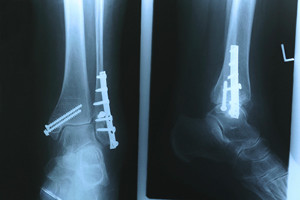 Shin splints and stress fractures can often be mistaken for one another. Stress fractures are tiny cracks in the bones, while shin splints can cause pain in the tendons, muscles, and tissues surrounding the shin bone, also known as the tibia. Stress fractures are often caused by overuse or repetitive force, which is why it is fairly common among runners. Long-distance running, as well as repeated jumping, can lead to a stress fracture, as well as weaken the bones due to osteoporosis. For more information on how to treat stress fractures, and help on differentiating them from shin splints, please speak with a podiatrist.
Shin splints and stress fractures can often be mistaken for one another. Stress fractures are tiny cracks in the bones, while shin splints can cause pain in the tendons, muscles, and tissues surrounding the shin bone, also known as the tibia. Stress fractures are often caused by overuse or repetitive force, which is why it is fairly common among runners. Long-distance running, as well as repeated jumping, can lead to a stress fracture, as well as weaken the bones due to osteoporosis. For more information on how to treat stress fractures, and help on differentiating them from shin splints, please speak with a podiatrist.
Activities where too much pressure is put on the feet can cause stress fractures. To learn more, contact one of our podiatrists from Active Foot and Ankle Care, LLC. Our doctors can provide the care you need to keep your pain free and on your feet.
Dealing with Stress Fractures of the Foot and Ankle
Stress fractures occur in the foot and ankle when muscles in these areas weaken from too much or too little use. The feet and ankles then lose support when walking or running from the impact of the ground. Since there is no protection, the bones receive the full impact of each step. Stress on the feet can cause cracks to form in the bones, thus creating stress fractures.
What Are Stress Fractures?
Stress fractures occur frequently in individuals whose daily activities cause great impact on the feet and ankles. Stress factors are most common among:
Symptoms
Pain from the fractures occur in the area of the fractures and can be constant or intermittent. It will often cause sharp or dull pain with swelling and tenderness. Engaging in any kind of activity which involves high impact will aggravate pain.
If you have any questions please feel free to contact our offices located in Fair Lawn, Riverdale, and Englewood, NJ . We offer the newest diagnostic and treatment technologies for all your foot and ankle needs.
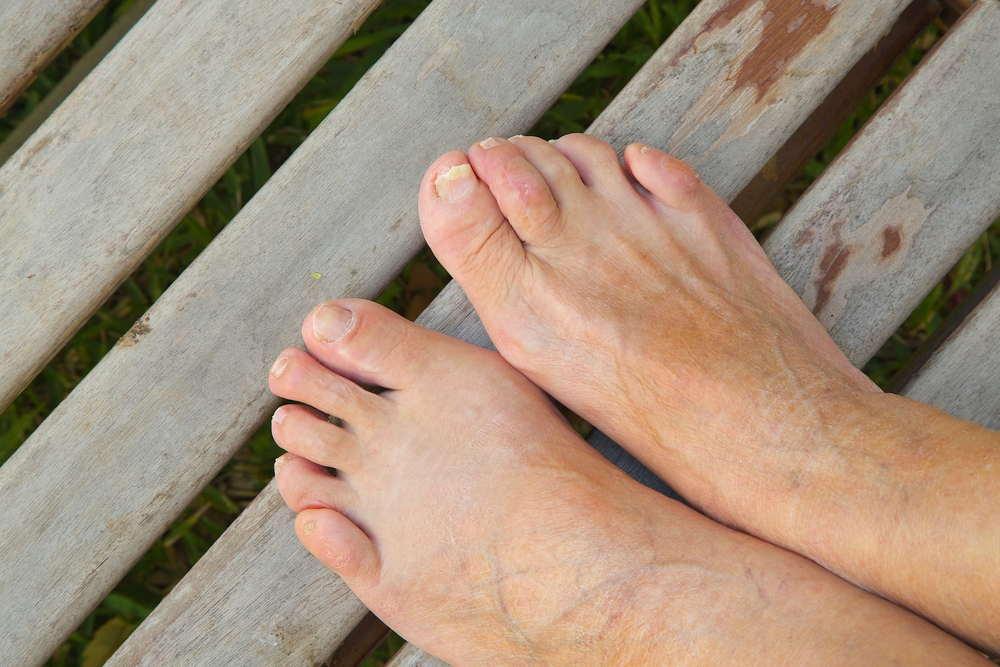 Hammertoes are a foot condition characterized by an abnormal bending of the second, third, fourth, or pinky toes. This deformity of the toes can cause pain and irritation in the toes, as well as corns and calluses. There are many nonsurgical treatment options for hammertoes, including shoe modifications, splinting the toe, padding or trimming corns and calluses, and certain exercises, therapies, and medications. However, sometimes these more conservative treatments fail and surgery may become an option. There are several surgical treatment options. In a joint fusion, the cartilage surfaces of the affected joint are removed and a screw is placed into the area to prevent motion. In a phalangeal head resection, a portion of the phalanx bone is removed and tension in the affected tendon is released. There are also tendon transfers, in which the tendons that are too tight may be cut or transferred to relieve tension and straighten the toes. To find the best treatment for your hammertoes, please consult with a podiatrist.
Hammertoes are a foot condition characterized by an abnormal bending of the second, third, fourth, or pinky toes. This deformity of the toes can cause pain and irritation in the toes, as well as corns and calluses. There are many nonsurgical treatment options for hammertoes, including shoe modifications, splinting the toe, padding or trimming corns and calluses, and certain exercises, therapies, and medications. However, sometimes these more conservative treatments fail and surgery may become an option. There are several surgical treatment options. In a joint fusion, the cartilage surfaces of the affected joint are removed and a screw is placed into the area to prevent motion. In a phalangeal head resection, a portion of the phalanx bone is removed and tension in the affected tendon is released. There are also tendon transfers, in which the tendons that are too tight may be cut or transferred to relieve tension and straighten the toes. To find the best treatment for your hammertoes, please consult with a podiatrist.
Hammertoes can be a painful condition to live with. For more information, contact one of our podiatrists of Active Foot and Ankle Care, LLC. Our doctors will answer any of your foot- and ankle-related questions.
Hammertoe
Hammertoe is a foot deformity that occurs due to an imbalance in the muscles, tendons, or ligaments that normally hold the toe straight. It can be caused by the type of shoes you wear, your foot structure, trauma, and certain disease processes.
Symptoms
Risk Factors
Treatment
If you have hammertoe, you should change into a more comfortable shoe that provides enough room for your toes. Exercises such as picking up marbles may strengthen and stretch your toe muscles. Nevertheless, it is important to seek assistance from a podiatrist in order to determine the severity of your hammertoe and see which treatment option will work best for you.
If you have any questions, please feel free to contact our offices located in Fair Lawn and Riverdale, New Jersey. We offer the newest diagnostic and treatment technologies for all your foot care needs.
Read more about What Are Hammertoes? Hammertoes are a foot condition characterized by an abnormal bending of the second, third, fourth, or pinky toes. This deformity of the toes can cause pain and irritation in the toes, as well as corns and calluses. There are many nonsurgical treatment options for hammertoes, including shoe modifications, splinting the toe, padding or trimming corns and calluses, and certain exercises, therapies, and medications. However, sometimes these more conservative treatments fail and surgery may become an option. There are several surgical treatment options. In a joint fusion, the cartilage surfaces of the affected joint are removed and a screw is placed into the area to prevent motion. In a phalangeal head resection, a portion of the phalanx bone is removed and tension in the affected tendon is released. There are also tendon transfers, in which the tendons that are too tight may be cut or transferred to relieve tension and straighten the toes. To find the best treatment for your hammertoes, please consult with a podiatrist.
Hammertoes are a foot condition characterized by an abnormal bending of the second, third, fourth, or pinky toes. This deformity of the toes can cause pain and irritation in the toes, as well as corns and calluses. There are many nonsurgical treatment options for hammertoes, including shoe modifications, splinting the toe, padding or trimming corns and calluses, and certain exercises, therapies, and medications. However, sometimes these more conservative treatments fail and surgery may become an option. There are several surgical treatment options. In a joint fusion, the cartilage surfaces of the affected joint are removed and a screw is placed into the area to prevent motion. In a phalangeal head resection, a portion of the phalanx bone is removed and tension in the affected tendon is released. There are also tendon transfers, in which the tendons that are too tight may be cut or transferred to relieve tension and straighten the toes. To find the best treatment for your hammertoes, please consult with a podiatrist.
Hammertoes can be a painful condition to live with. For more information, contact one of our podiatrists of Active Foot and Ankle Care, LLC. Our doctors will answer any of your foot- and ankle-related questions.
Hammertoe
Hammertoe is a foot deformity that occurs due to an imbalance in the muscles, tendons, or ligaments that normally hold the toe straight. It can be caused by the type of shoes you wear, your foot structure, trauma, and certain disease processes.
Symptoms
Risk Factors
Treatment
If you have hammertoe, you should change into a more comfortable shoe that provides enough room for your toes. Exercises such as picking up marbles may strengthen and stretch your toe muscles. Nevertheless, it is important to seek assistance from a podiatrist in order to determine the severity of your hammertoe and see which treatment option will work best for you.
If you have any questions, please feel free to contact our offices located in Fair Lawn, Riverdale, and Englewood, NJ . We offer the newest diagnostic and treatment technologies for all your foot care needs.
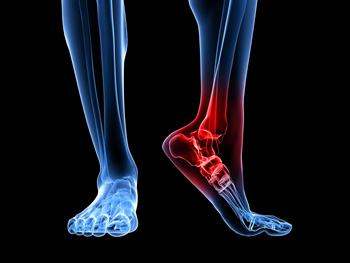 Growing adolescents may experience the medical condition that is known as Sever’s disease. It typically affects teenagers who frequently participate in sporting activities, and pain and discomfort may be felt in the heel during physical activity. Reduced flexibility can be a result of the inflammation that can occur from tightened muscles. Noticeable signs that your child can exhibit include limping, and favoring one foot. The foot may feel better with rest, and when specific stretches are performed and this is most beneficial when done on a daily basis. If your child has heel pain, it is recommended that you consult with a podiatrist who can properly diagnose and treat Sever's disease.
Growing adolescents may experience the medical condition that is known as Sever’s disease. It typically affects teenagers who frequently participate in sporting activities, and pain and discomfort may be felt in the heel during physical activity. Reduced flexibility can be a result of the inflammation that can occur from tightened muscles. Noticeable signs that your child can exhibit include limping, and favoring one foot. The foot may feel better with rest, and when specific stretches are performed and this is most beneficial when done on a daily basis. If your child has heel pain, it is recommended that you consult with a podiatrist who can properly diagnose and treat Sever's disease.
Sever's disease often occurs in children and teens. If your child is experiencing foot or ankle pain, see one of our podiatrists from Active Foot and Ankle Care, LLC. Our doctors can treat your child’s foot and ankle needs.
Sever’s Disease
Sever’s disease is also known as calcaneal apophysitis, which is a medical condition that causes heel pain I none or both feet. The disease is known to affect children between the ages of 8 and 14.
Sever’s disease occurs when part of the child’s heel known as the growth plate (calcaneal epiphysis) is attached to the Achilles tendon. This area can suffer injury when the muscles and tendons of the growing foot do not keep pace with bone growth. Therefore, the constant pain which one experiences at the back of the heel will make the child unable to put any weight on the heel. The child is then forced to walk on their toes.
Symptoms
Acute pain – Pain associated with Sever’s disease is usually felt in the heel when the child engages in physical activity such as walking, jumping and or running.
Highly active – Children who are very active are among the most susceptible in experiencing Sever’s disease, because of the stress and tension placed on their feet.
If you have any questions, please feel free to contact our offices located in Fair Lawn and Riverdale, New Jersey. We offer the newest diagnostic and treatment technologies for all your foot and ankle injuries.
Read more about Sever's Disease





